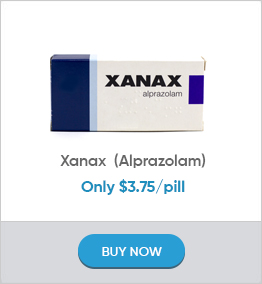Xanax, also known as alprazolam, is a benzodiazepine medication that has a rich history and a range of uses. By enhancing the effects of a neurotransmitter called GABA, Xanax helps reduce anxiety and promote relaxation. Primarily, it is prescribed for managing anxiety and panic disorders. It effectively alleviates symptoms such as excessive worry, tension, and restlessness. Xanax has become one of the most commonly prescribed medications in the United States, largely due to its fast-acting nature and immediate relief for acute anxiety symptoms. Usage patterns can vary among different populations. For instance, older adults may be more sensitive to the sedative effects of Xanax, which increases the risk of falls and cognitive impairment. The drug is available in different forms, including immediate-release tablets, extended-release tablets, and orally disintegrating tablets. Immediate-release tablets provide quick relief and are taken multiple times a day, while extended-release tablets are designed for once-daily dosing. Orally disintegrating tablets are a convenient option for those who struggle with swallowing.
Molecular Action of Xanax
Xanax acts on the central nervous system by enhancing the effects of a neurotransmitter called gamma-aminobutyric acid (GABA). GABA is an inhibitory neurotransmitter that aids maintain brain activity and plays an important part in lowering anxiety and increasing relaxation. When GABA binds to specific receptors in the brain, it decreases neuronal excitability, resulting in a calming effect. Xanax enhances the effects of GABA by binding to GABA-A receptors, which increases the inhibitory actions of GABA. By enhancing GABA’s inhibitory activity, Xanax reduces the transmission of nerve signals in the brain, leading to a decrease in anxiety symptoms. It effectively calms excessive worry, reduces feelings of tension, and promotes a sense of relaxation.
Xanax’s relatively quick pharmacological action enables speedy alleviation of acute anxiety symptoms. The effects usually start to take action 30 to 60 minutes after consumption. It’s crucial to remember that Xanax has a rather brief duration of action, so its effects could subside in a few hours.
Solution for Panic Disorder
People who have panic disorder frequently worry a lot and fear having more panic episodes. This anxiety can develop into anticipatory anxiety, where people become preoccupied with the likelihood of experiencing another attack and may begin to avoid specific locations or circumstances that they link to past panic attacks. This avoidance behavior can have a negative effect on day-to-day activities and may progress to agoraphobia, which is a fear of being in locations or circumstances from which escape might be challenging or embarrassing. But luckily, Xanax comes to their rescue. For those in the grip of a panic attack, Xanax provides rapid relief. Within about 30 minutes to an hour after taking it, they start to feel the anxious thoughts dissipating, the racing heart slowing down, and the tightness in their chest easing. It’s like a soothing balm that brings peace to their minds and bodies.
Although the precise causes of panic disorder are not fully understood, a number of factors are thought to have a role in its emergence. These factors may include genetic predisposition, brain chemistry imbalances, history of trauma or stressful life events, and certain personality traits or temperament.
Anxiety and Inducing Relaxation
Anxiety is a pervasive psychological condition that profoundly impacts individuals, enveloping their lives with a persistent sense of unease. It manifests as physiological discomfort, characterized by heightened heart rate, shallow breathing, and muscular tension. Emotionally, it induces apprehension, restlessness, and a heightened vulnerability to negative emotions. Cognitively, anxious individuals grapple with incessant worry, catastrophic thoughts, and a distorted perception of threat.
Extensive research has shed light on the specific mechanisms through which Xanax exerts its anxiolytic (anti-anxiety) and sedative effects. GABA, an inhibitory neurotransmitter, plays a crucial role in regulating brain activity. It achieves this by binding to specific GABA-A receptors present throughout the central nervous system. This binding prompts an influx of chloride ions into neurons, reducing their excitability and resulting in a calming effect. By binding to GABA-A receptors, Xanax enhances the effects of GABA. This binding process modulates the receptors, increasing the frequency of chloride channel opening in response to GABA. Consequently, the enhanced inhibitory effect of GABA leads to decreased neuronal excitability and a reduction in anxiety symptoms.
Research has demonstrated the rapid onset of action associated with Xanax, contributing to its efficacy in managing acute anxiety. In a study published in Neuropsychopharmacology, researchers used positron emission tomography (PET) imaging to investigate the effects of Xanax in individuals with panic disorder. The findings revealed a significant increase in GABA activity in the brain, particularly in regions involved in anxiety regulation, following Xanax administration.
Effects of Drug Combination
Certain drug combinations can lower the effect of Xanax or merely interfere with it. It is always better to know what drugs one should not combine with Xanax. Combining Xanax with alcohol or other substances that depress the central nervous system can be extremely dangerous. It can result in excessive sedation, difficulty breathing, and even an overdose. Additionally, Xanax can interact with certain medications like opioids, antidepressants, and antifungal drugs. These interactions may impact the effectiveness of the medications or increase the risk of side effects.

